Outlook of Insurance Industry in 2021


As Botswana’s economy has contracted by at least 9.1% in 2020 due to the COVID-19’s impact on global demand, travel restrictions and social distancing measures constrain output in key production and export sectors, including the diamond industry and tourism. The outlook for the industry shows relatively high levels of insurance density and penetration resulting in strong premiums growth from 2021 onwards. To add on, there is expected gradual change in terms of premiums growth in both the life and non-life markets which will be supported by increasing disposable household incomes, improved affordability and relatively low levels of inflation. Since insurance industry does not cover pandemics, there might be a decline in the demand for insurance policies.
Developments in the global diamond industry will have a telling impact on the short-term recovery given Botswana’s dependence on the commodity. Whilst a mild recovery is expected for 2021, the economic impact of COVID-19 is likely to be deep and long-lasting. The authorities’ ability to advance on key reforms laid out in its 2020-2023 Economic Recovery and Transformation Plan will thus play a key role in creating conditions for broad-based growth and thus improving Botswana’s economic performance. There is need for insurance clients to expect hard market conditions in 2021 as the economies of all countries have been hard hit due to the COVID-19 pandemic. To add on, there will be limited growth and higher premiums. Insurers in 2021 will be no doubt erring on the side of caution, introducing new coverage limits and adding new terms and conditions to policies to ensure they aren’t hit too hard by any potential further waves of COVID-19. Higher rates might be par for the course in 2021, but insurers will no doubt double down on their efforts to add value and ensure that customers don’t move away when premiums rise. The companies that take feedback on-board and use it to develop innovative new products that maximise customer retention rates will win – even in a tough market.
With the insurance industry, it has always been a data-driven sector, but new tech means that insurers can now utilise big data to their advantage. More data means that insurance policies can be customised to individuals, and that insurers can minimise risk and improve the accuracy of their calculations by considering more metrics during the underwriting process. Through out 2021, insurers will be incorporating new data points into their risk assessment and premium calculations. This data – which can be gathered from Internet of Things (IoT) devices, social media pages, and credit reports – can be used to more accurately price policies.
In the long run, this will save insurers money and ensure that pricing is fair. This is because low-risk customers can enjoy lower premiums, and only truly high-risk customers will be required to pay steeper rates.
In 2021, the insurance industry might see a trend of tailored products, as well as fairer premiums. Driven by big data, insurance products are becoming more flexible every year. Millennials, which are insurance customers in their 20s and 30s, will now be one of the biggest population groups, and insurers need to market products towards this techsavvy group if they want to stay on top. In Botswana, young professionals occupy the desks and these are the targeted group that insurers need to cater for.
Millennials expect more product personalisation and customer engagement, which means insurers need to brush up on their digital skills. Pulling in data from IoT devices – including wearable fitness trackers and car telematics – can be a simple way to personalise insurance products so that discerning younger customers feel they’re getting good value on insurance products which are priced according to their own needs and behaviours. The emerging insurance industry trends of 2021 highlight the desire for bespoke insurance products and tailored policies, and the need for insurers to be open-minded about just how much value AI and other new technologies can bring to the table.





